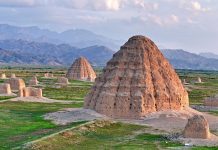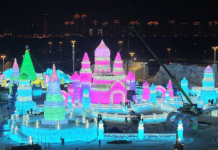DM Monitoring
HEFEI: Exchanging garbage for daily goods? This seemingly impossible concept has become a reality in more than 170 special supermarkets in the city of Huangshan, east China’s Anhui Province.
According to the promotion’s regulations, people can earn one reward point by collecting five spent batteries or 30 cigarette cases and two points can be exchanged for a bag of salt and four points for a bottle of detergent.
Since its establishment, Yu Zhujin has frequented one of these supermarkets in Qiankou Village, lured by the prospect of receiving free items at first. “But gradually, it has become a habit. Seeing litter outside, I naturally pick it up, not just for the sake of a reward,” said Yu, 66.
The supermarkets set up to mobilize the public participation in environmental protection are part of a cross-provincial eco-compensation scheme aiming to improve the water environment in east China. About two km away from Yu’s house stands the Fengle River, a tributary of the Xin’an River that runs through Anhui and Zhejiang provinces, where environmentally unfriendly behaviors a decade ago caused serious deterioration of the water quality.
With the trunk stream stretching for about 360 km, Xin’an serves as a crucial ecological protective screen and water resource for the Yangtze River Delta, an area spanning Shanghai and the provinces of Jiangsu, Zhejiang and Anhui.
In flood season, hundreds of thousands of tonnes of garbage floated all the way along Xin’an to downstream basins including Qiandao Lake in Zhejiang, resulting in an abnormal bloom of blue-green algae in the lake in 2010.
“To jointly address water quality concerns in the Xin’an River basin, a pilot cross-provincial ecological compensation scheme was introduced by Anhui and Zhejiang,” said Bi Mengfei, head of the Xin’an River ecological protection center. In the first three-year phase, an eco-compensation fund totaling 500 million yuan (about 70.3 million U.S. dollars) was allocated with the support of the central government and the two provincial governments.
Under the scheme, the water quality is subjected to periodic assessments at the interprovincial section. If the water quality meets agreed standards, Zhejiang should compensate Anhui to defray the ecological protection cost. Otherwise, Anhui should compensate Zhejiang to pay for additional water treatment costs.
The protection of the water environment, however, inevitably limited industrial development around the river.
According to Bi, the city of Huangshan has shut down more than 180 companies and relocated over 110 industrial enterprises since 2011, investing 6 billion yuan to build an eco-industrial park. Also, 16 teams with several hundred people were formed to clean up the garbage in the waterways.
The unremitting efforts have gradually paid off, with upstream water quality at the Xin’an River registering the best quality from 2012 to 2018, sending nearly 7 billion cubic meters of clean water to Qiandao Lake every year.
The third three-year phase is set to end later this year. Except for witnessing a clean river running east, local people have also been sharing the benefits brought by sustainable development.
In recent years, Huangshan has promoted the development of green industries and ecotourism. The total income of tourism last year reached 65.9 billion yuan, a year-on-year growth of 15 percent.





